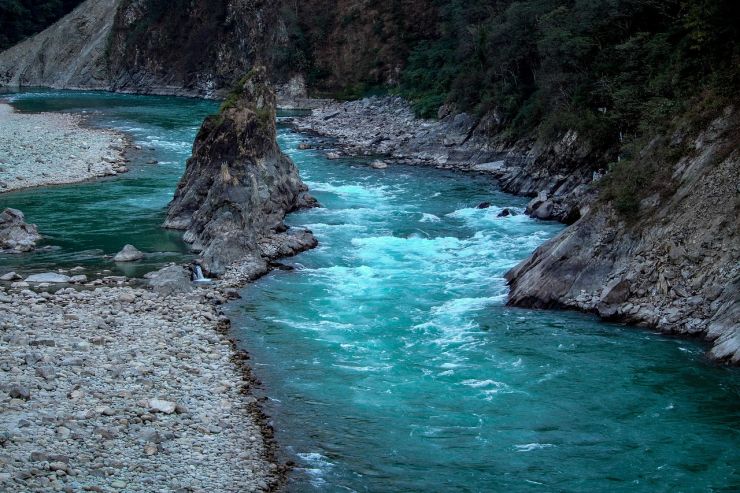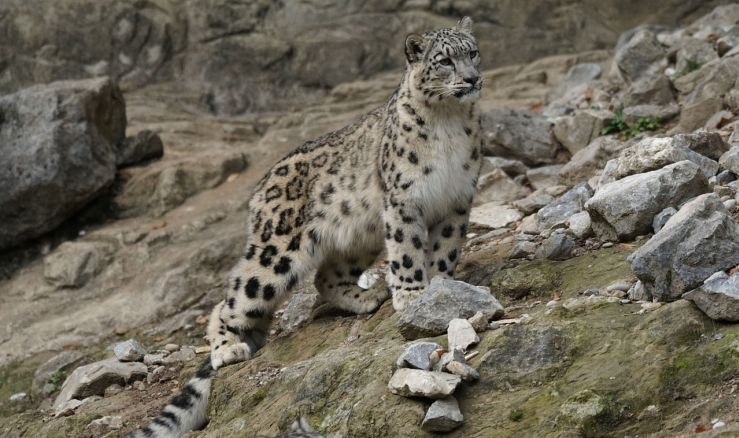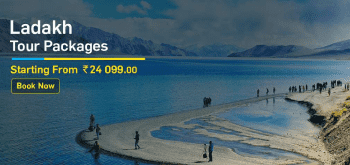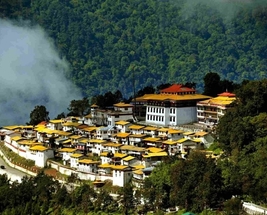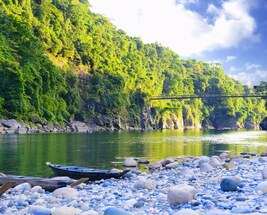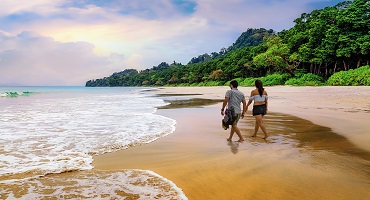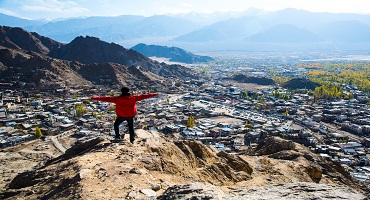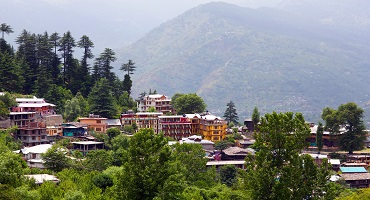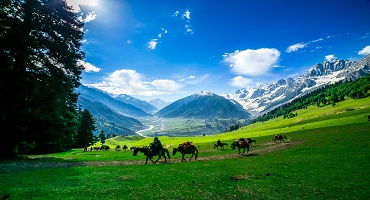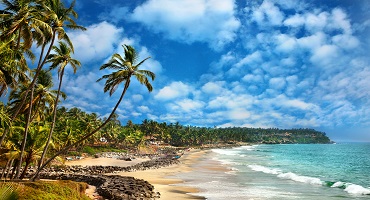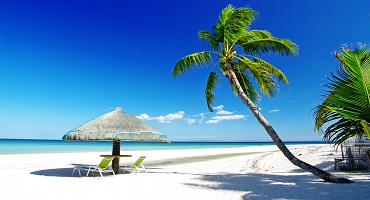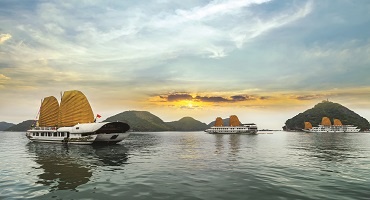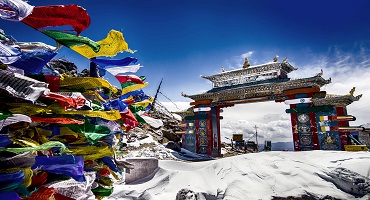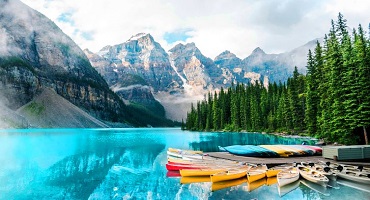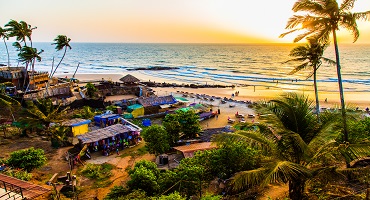If an artist was to paint Arunachal Pradesh, where would he or she start? Emerald, lime, moss, jade for the deep, deep forests. White, touched with a little grey for the thick mist. Red, white, blue, yellow, green for the delicate fluttering flags of the monasteries. What shade would capture the crystal-clear water of the rivers? What blue could match the great sweep of the sky?
We’re inviting you to step into this painting. Feel the sweeps of wind up the grey-black mountains. Shiver at the chill brought about by the powdery white snow. Feel the spirals of heat from a large mug of tea warm your face. Stand in awe of a majestic Yak in all its furred and horned glory. Arunachal Pradesh is picture perfect, but it also moves, breathes and pulses with wind, rain, heat and snow. To understand what this beautiful place is made of, you need to look at the forces of weather that affect it. That way, you can experience the magic of the state in any way that you want to.
We’ve put together a guide of all of the state’s seasons. This guide should help you answer that vital question – what is the best time to visit Arunachal Pradesh? So, let’s dive right in. Afterall, your trip to Arunachal awaits.
Peak Season – October to April
Off Season – July to August
Shoulder Season - April to May
|
Travel Season
|
Min/Max Temperature
|
Weather
|
|
March to June
|
10-31°C
|
Summer - Hot
|
|
July to September
|
19-34 °C
|
Monsoon - Heavy Rainfall
|
|
October to February
|
4-32 °C
|
Winter - Snowy and Chill
|
Arunachal Pradesh in Summer (March – June)
Temperature - Arunachal Pradesh experiences an average of 31 degrees high to 10 degrees low during summer.
Weather - Spring gently leads summer into Arunachal Pradesh. March retains some of the pleasant cool of winter, mixed with the bright beauty of summer. To a certain extent, March and April represent a small Spring season in Arunachal Pradesh, followed by a true, blue summer. Summer is the time of warm breeze, hot afternoons and cooler evenings.
Significance - Keeping an eye out for the wildlife of Arunachal Pradesh? Well, the summer will draw them out for your delight. Go trekking and sightseeing in Ziro, Tawang and Namdapha National Park to discover the wildlife of this region. Summer is also the time to visit the variety of Buddhist monasteries that Arunachal Pradesh has to offer.
Why you should visit now - Unlike the winter and monsoon, Arunachal Pradesh is open to the eye. National Parks, mountain trails, waterfalls – they’re all perfect in summer. For those who are looking for the natural wonders of this region, summer is the time to do it. Furthermore, the weather allows you to keep your packing on the lighter side — no need to carry heavy woollens and thermals. You can trek freely, without the added burden of winter or monsoon clothing.
Things to know before the visit - If you plan to explore the region, mornings and evenings are the most pleasant parts of the day. However, when the summer season peaks, temperatures do soar to a hot 35 degrees. In these cases, try not to overexert yourself as the heat can sap you of all your energy.
Tips - The hotter side of summer is considered to be an offseason. This means better deals on hotels, flights and other costs of the trip. Bear in mind that you will need to stay hydrated and comfortable during this season, as it can get quite hot. If you can push through the heat, you can experience some of the most beautiful landscapes in the country.
Arunachal Pradesh in Monsoon (July- September)
Temperature - Arunachal Pradesh experiences an average of 34 degrees high to 19 degrees low during monsoon.
Weather - Mid-year is when the moody monsoon settles over Arunachal Pradesh. Why moody? Well, the weather in the monsoon is often unpredictable. One moment the skies are crowded with heavy dark clouds, the next minute, the sky is sunny and clear. Monsoon is a short and intense season that features lash after lash of torrential rainfall. The heat and dust of the summer are washed away to reveal lush greenery that carpets the region.
Significance - If you do plan a trip to Arunachal Pradesh during the monsoon season, you can bear witness to different festivals in the region. The Apatani tribe holds the traditional Dree Festival in July. The Adi community celebrates, over ten days, the festival of Solang. Monsoon is a time to soak in traditional festivities of the locals and understand the stories and sentiment behind them.
Why you should visit now - The weather in Arunachal Pradesh in monsoon might be hard to navigate for us mortals. However, it is a godsend for the state’s natural landscapes. The dense vegetation receives all the rainfall it needs to thrive. The land is cooled down and waterfalls like Nuranang falls and Bap Teng Kang falls swell, slide and splash down the mountain slide. If you’ve planned your trip to Arunachal Pradesh during monsoon, you’ll get to witness the magic of the monsoon and what a delightful part it has to play in nature’s pageantry.
Things to know before the visit - The monsoon is a visual treat, there’s no doubt about that. However, Arunachal Pradesh during monsoon also comes with its share of risks. Due to heavy rainfall, roads are often completely washed away. The heavy fall of rain can also trigger landslides and deep floods. Humidity also rises and can make the atmosphere uncomfortable. Proceed with caution.
Tips - If you have your heart set on a trip to Arunachal Pradesh during the monsoon season, make sure it is a short one and in one of the relatively drier months of the monsoon. Do pack a raincoat, windcheater, gumboots an umbrella and other rain gear for your trip. If you are carrying a camera or any other expensive equipment, make sure they stay protected from the downpour.
Arunachal Pradesh in Winter (October-February)
Temperature - Arunachal Pradesh experiences an average of 32 degrees high to 4 degrees low during winter.
Weather - Ever wanted to visit a winter wonderland? Well, Arunachal Pradesh is one. Thick, white layers of snow blanket the region, chilly winds swish and swirl all around and the temperature drops down. Peeping out from all that white is a surprising amount of green. The weather in Arunachal Pradesh in winter is pleasant and cold. Sometimes temperatures can drop below 4 degrees and snowfall can be heavier, hampering some of the winter activities. However, this is considered to be the best time to visit Arunachal Pradesh, especially by snow seekers.
Significance - Although the tundra-like weather can seem quite extreme, sightseeing is at its peak during winter. In September and October, you can catch the Ziro Festival of Music – an exquisite mix of regional, national and international music. The Siang River festival follows in December – with more folk shows, cultural programmes, music, competitions, paragliding, hot air balloon rides and more. For exhibitions and shows, the Pangsau Festival in January is ideal. In February, Arunachal Pradesh celebrates Nyokum Yullo and Chalo Loku – harvest festivals that herald the end of winter. For a little peace and quiet, you can take a winter trek in the Talle Valley near Ziro. For skiing and hiking opportunities, Tawang is the place to be. Festival after festival whips Arunachal Pradesh into a beautiful frenzy – it’s no wonder that many want to be a part of it.
Why you should visit now - Clear and chilly days. White glittering snow. Festivals galore. Arunachal Pradesh is magnificent in the winter. Furthermore, this is the peak tourist season and so you’ll meet people from all cultures and corners of the world.
Things to know before the visit - Winters in the state are usually pleasant and cold. However, some areas get extremely chilly. There are also parts of the season where the temperature drops to freezing levels. The roads, during this time, might not be very smooth or conducive to travel and are sometimes blocked with heavy snow. Make sure you keep an eye on the forecast and check with locals before you venture out.
Tips - If you’re packing for a winter trip to Arunachal Pradesh, you need to stay protected from the cold and snow. Add thermals, woollens, caps, sweaters, scarves, thick boots, sunglasses and other items to protect from the cold.
Allured by Arunachal Pradesh? Then its time to head over to our holiday packages page and book a trip to this beautiful region.






